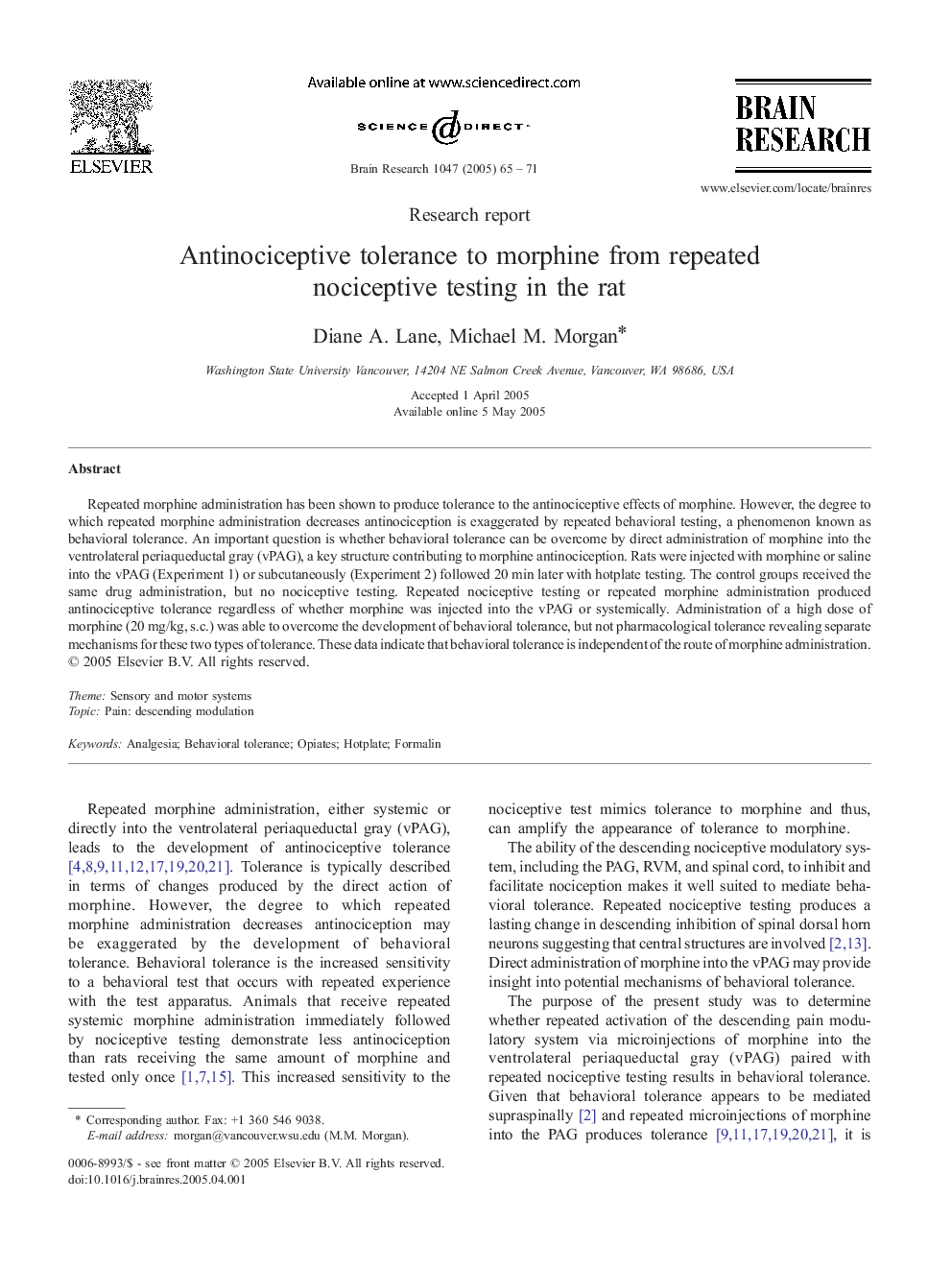| Article ID | Journal | Published Year | Pages | File Type |
|---|---|---|---|---|
| 9416238 | Brain Research | 2005 | 7 Pages |
Abstract
Repeated morphine administration has been shown to produce tolerance to the antinociceptive effects of morphine. However, the degree to which repeated morphine administration decreases antinociception is exaggerated by repeated behavioral testing, a phenomenon known as behavioral tolerance. An important question is whether behavioral tolerance can be overcome by direct administration of morphine into the ventrolateral periaqueductal gray (vPAG), a key structure contributing to morphine antinociception. Rats were injected with morphine or saline into the vPAG (Experiment 1) or subcutaneously (Experiment 2) followed 20 min later with hotplate testing. The control groups received the same drug administration, but no nociceptive testing. Repeated nociceptive testing or repeated morphine administration produced antinociceptive tolerance regardless of whether morphine was injected into the vPAG or systemically. Administration of a high dose of morphine (20 mg/kg, s.c.) was able to overcome the development of behavioral tolerance, but not pharmacological tolerance revealing separate mechanisms for these two types of tolerance. These data indicate that behavioral tolerance is independent of the route of morphine administration.
Related Topics
Life Sciences
Neuroscience
Neuroscience (General)
Authors
Diane A. Lane, Michael M. Morgan,
